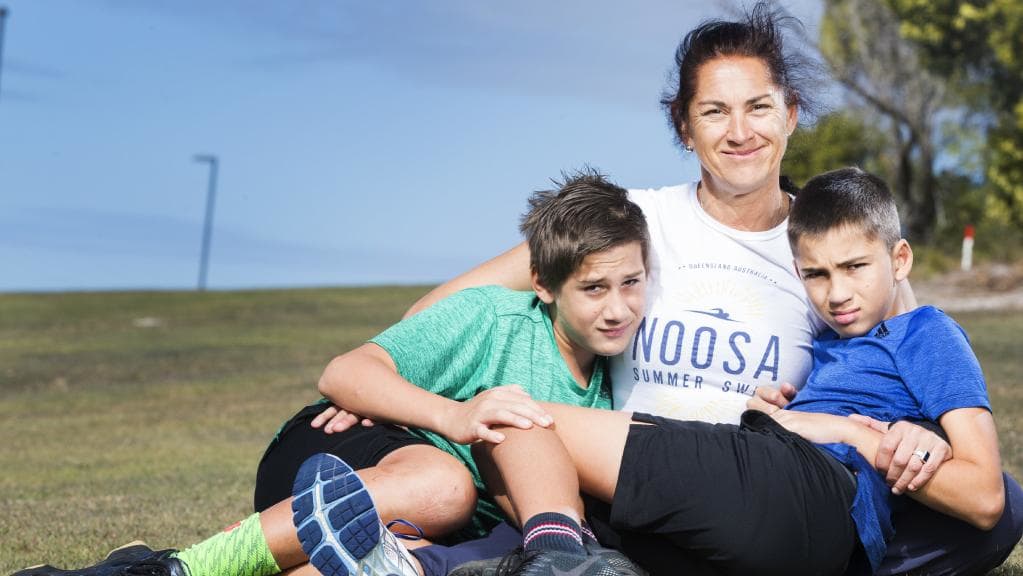
Many people take it as a given that when participating in organised sport, and where you pay for and are provided with mandatory insurance that you MUST take in order to participate, that if the unforeseen happens, you will be covered.
However, the reality is that the insurance is often inadequate in terms of covering the real cost of loss of income and other medically related expenses.
Case study – Injured triathlete let down by inadequate insurance
A recent matter I dealt with involved a woman who was left with a combination of physical, neurological and psychological injuries when she hit her head after being knocked over by a para-triathlete in a racing wheelchair, who was competing on the same, narrow course.
Up until the time of the accident Sally James was working as a Sunshine Coast clinical psychologist.
The incident took place in February 2018, at the Luke Harrop Gold Coast Triathlon, leaving the single mother of two with a Traumatic Brain Injury, whiplash, concussion and Post-Traumatic Stress Disorder.
The incident has had a devastating impact on every area of Sally’s life.
“My injuries have rendered me temporarily disabled, which has had a devastating impact on my self-esteem, my fitness, my health, my professional career and my family. By far, the most upsetting and greatest impact of my injuries has been on my reduced capacity and competence as a single mother of twin boys. Our overall family happiness has definitely decreased, and we are unable to participate as a family in the recreational and sports activities that we love,” she said.
The accredited fitness instructor, who has formerly competed at national level in athletics and netball, said she never expected to get injured and had wrongly assumed that the QM360 Sports Insurance Policy provided through Triathlon Australia (TA) would adequately cover any risks.
“Every triathlon event in Australia is sanctioned by Triathlon Australia and it’s compulsory for every triathlete to be a member of TA to compete. As part of our membership fee, every triathlete must pay for QBE insurance, so I assumed it would be fit for purpose,” she said.
But instead of covering the costs of her injuries and her loss of income, the policy has proven to be worthless.
“I haven’t been able to even make a claim on the QBE insurance because it took medical specialists more than six weeks to determine the extent of my injuries. By then I had passed the 30-day notification timeframe set out in the policy.”
Sally also discovered that any claim attracts a $1000 policy excess fee, and weekly benefits were capped at a mere $400.
“There are also limits on how much you can claim for medical expenses, which I passed in the first six weeks post injury. And the insurance doesn’t even cover counselling, which is an essential requirement for treating PTSD.”
In addition to taking out the mandatory policy she was also required to sign an Agreement and Liability Waiver. It states that athletes agree “not to sue” and “forever discharge Active and all other persons associated with the event for all liabilities, claims actions or damages” caused by negligence, action or inaction.
Sally felt she had no options left when she engaged me to pursue a claim against the event organisers to seek damages for her significant losses.
The matter is ongoing and I will provide an update once the matter is finalised.
Sporting Competitors take note
While it is important to read and understand all paperwork before signing, and prior to competing in any sporting discipline, there is a fundamental flaw with this that impacts competitors.
To compete, competitors are compelled to sign paperwork, including waivers and disclaimers and agree to the insurance. And if they don’t or wont they cannot compete.
Invariably these sporting insurance policies will have capped benefits (the amount they will pay for things like loss of income) and time frames. If you are a self-employed person you should seek the advice of your insurance broker or financial adviser to ascertain if you should also have income protection cover that will afford you greater protection should you sustain an injury.
Is the risk worth it?
Competitors should also conduct a thorough safety and risk assessment before deciding to compete in sporting events and make an educated and informed decision on whether they can actually afford to compete.
Volunteers are also at risk
It’s not just competitors who are at risk from these types of underinsurance cases. Both competitors and volunteers at sporting events often mistakenly believe the insurance available via their association membership and event entry fees are adequate in the event of injury.
If the worst happens you must act quickly
Because there are time limits for submitting a claim, which can range anywhere from three months to six years, it’s also important to find out your rights quickly to ensure the matter is handled accurately and within the right time frame.
In some circumstances injured parties may be able to access their superannuation or be eligible for Total and Permanent Disablement (TPD) benefits through their superannuation fund’s insurance policy.
Therefore, it’s important to seek both medical and legal advice in the early stages of a serious injury claim, especially if the injury prevents you from working in your chosen field. The sooner a valid claim can be lodged, the sooner the fund or insurer will begin assessing your claim, which can lead to a speedier resolution to help people get back on their feet.
Picture taken by: Lachie Millard, Courier Mail
Managing Partner
View Bio >
